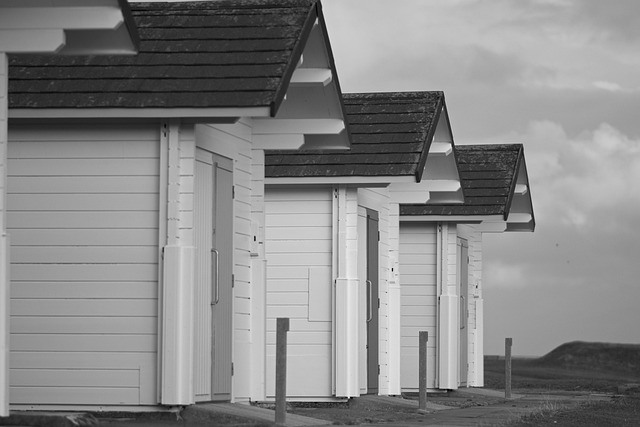Green roofing systems, featuring membranes, drainage, growing medium, and plants, offer a sustainable solution for urban development. They enhance insulation, regulate temperatures, reduce energy consumption, and act as natural filters for rainwater and carbon dioxide. Integrating solar panels amplifies these benefits, providing efficient power solutions while promoting biodiversity. These systems create eco-friendly urban environments with improved insulation, reduced water runoff, and better air quality, fostering livable cities and mitigating climate change impacts. Case studies show their versatility in both urban and rural settings, offering natural cooling, supporting local biodiversity, and integrating renewable energy for reduced carbon footprints.
“Green roofing systems are transforming urban landscapes, offering a sustainable solution to mitigate environmental impact. This article explores the synergistic potential of integrating green roofs with solar systems for dual benefits: enhanced ecosystem services and renewable energy generation. We delve into the environmental advantages of each technology, their optimal combination, and the significant benefits they bring to urban spaces. Through case studies, we demonstrate successful implementations, showcasing the power of these innovative systems in creating sustainable, vibrant cities.”
Understanding Green Roofing Systems and Their Impact on the Environment
Green roofing systems, also known as eco-roofs or living roofs, are designed to mimic natural ecosystems by integrating vegetation into a built environment. They consist of multiple layers—including a water-resistant membrane, drainage systems, growing medium, and plants—that together provide an innovative solution for sustainable urban development. By covering rooftops with greenery, these systems offer numerous environmental advantages.
One of the key impacts is improved insulation, which helps regulate building temperatures, reducing energy consumption for heating and cooling. Additionally, green roofs act as natural filters, absorbing rainwater and minimizing stormwater runoff, thereby alleviating pressure on municipal drainage systems. The plants also contribute to air quality by absorbing carbon dioxide and releasing oxygen, helping to mitigate urban heat islands, and providing habitats for local wildlife.
The Role of Solar Panels in Sustainable Energy Production
Solar panels play a pivotal role in harnessing renewable energy, making them an integral component of sustainable practices. When integrated into green roofing systems, they offer a dual benefit—both enhancing environmental sustainability and providing efficient energy solutions. These panels convert sunlight into electricity, reducing the reliance on conventional power sources. By mounting solar panels on green roofs, buildings can actively contribute to energy conservation while promoting biodiversity and urban greening.
The synergy between green roofs and solar systems creates an eco-friendly environment. Green roofing provides insulation, mitigates the urban heat island effect, and absorbs rainwater, preventing stormwater runoff. Combining this with solar energy production results in a highly efficient, sustainable building design. This approach not only reduces carbon footprints but also fosters a healthier, more livable urban space.
Integrating Green Roofs and Solar Systems for Optimal Efficiency
Combining green roofs with solar systems offers a synergistic approach to sustainability, maximizing efficiency and environmental benefits. Green roofing systems provide insulation, reduce urban heat islands, and absorb rainwater, while solar panels harness renewable energy from the sun. By integrating these two technologies, buildings can achieve optimal performance. For instance, the shade provided by vegetation on a green roof can improve solar panel efficiency by lowering ambient temperatures. Additionally, green roofs can enhance the structural integrity of buildings, making them more resilient to extreme weather events.
This integration also has economic advantages. Green roofing systems can extend the lifespan of solar panels by protecting them from harsh weather conditions, reducing maintenance costs. Moreover, many governments offer incentives for installing both green roofs and solar panels simultaneously, further offsetting installation expenses. As a result, buildings equipped with these dual systems contribute to both ecological preservation and financial savings over time.
Benefits of Combining These Technologies for Urban Spaces
Combining green roofing systems with solar panels offers a powerful one-two punch for urban spaces, creating sustainable environments that benefit both nature and humanity. Green roofs provide insulation, reduce the urban heat island effect, and absorb rainwater, easing strain on municipal drainage systems. They also improve air quality by filtering pollutants and offer habitats for local wildlife. Solar systems, on the other hand, generate clean energy, reducing a building’s carbon footprint and dependency on fossil fuels.
By integrating these technologies, cities can create resilient, eco-friendly spaces that promote biodiversity and mitigate climate change impacts. This dual approach not only reduces environmental pressures but also enhances the aesthetics and value of urban properties, fostering a more sustainable and livable future for cities worldwide.
Case Studies: Successful Implementations Across Different Settings
Green roofing systems have gained traction in various settings, demonstrating their versatility and environmental benefits. From urban skyscrapers to suburban homes and even remote rural structures, case studies show successful implementations that highlight dual sustainability advantages. In densely populated cities, green roofs help mitigate the urban heat island effect, reduce storm water runoff, and provide insulation, thereby lowering energy consumption.
In more rural or agricultural areas, these systems can support local biodiversity by creating habitats for various plant and animal species while also offering natural cooling solutions. Furthermore, integrating solar panels into these green roofing systems amplifies sustainability efforts by harnessing renewable energy. These combined approaches not only reduce carbon footprints but also contribute to resilient, eco-friendly environments in diverse geographical locations.
By integrating green roofing systems with solar panels, we can create sustainable urban environments that offer multiple environmental benefits. This combination optimizes energy efficiency, reduces carbon footprints, and enhances biodiversity in urban spaces. As demonstrated by successful case studies, this dual approach to sustainability is not only feasible but also transformative. Embracing these technologies is a step towards a greener future for our cities, ensuring a more sustainable and resilient urban landscape.
